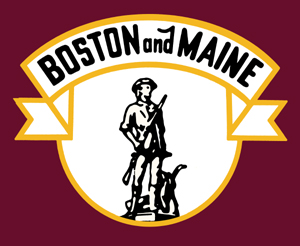
The Boston and Maine Corporation, known as the Boston and Maine Railroad (B&M), was a U.S. Class I railroad in northern New England. It became part of what is now the Pan Am Railways network in 1983.

The New York, New Haven and Hartford Railroad, commonly known simply as the New Haven, was a railroad that operated in the New England region of the United States from 1872 to 1968, dominating the region's rail traffic for the first half of the 20th century.

Daniel Coit Gilman was an American educator and academic. Gilman was instrumental in founding the Sheffield Scientific School at Yale College, and subsequently served as the second president of the University of California, Berkeley, as the first president of Johns Hopkins University, and as founding president of the Carnegie Institution. He was also co-founder of the Russell Trust Association, which administers the business affairs of Yale's Skull and Bones society. Gilman served for twenty five years as president of Johns Hopkins; his inauguration in 1876 has been said to mark "the starting point of postgraduate education in the U.S."
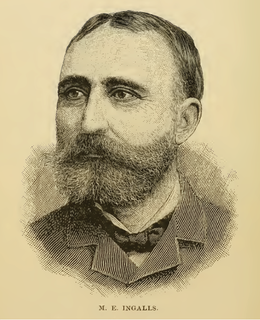
Melville Ezra Ingalls (1842–1914), commonly abbreviated M. E. Ingalls, was a Massachusetts state legislator who went on to become president of the Cleveland, Cincinnati, Chicago and St. Louis Railroad.

Bela Lyon Pratt was an American sculptor from Connecticut.
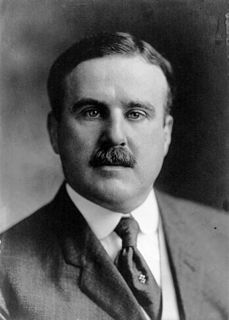
Thomas Lee "Bum" McClung was an American college football player and coach who later served as the 22nd Treasurer of the United States.

The Connecticut Company was the primary electric street railway company in the U.S. state of Connecticut, operating both city and rural trolleys and freight service. It was controlled by the New York, New Haven and Hartford Railroad, which also controlled most steam railroads in the state. After 1936, when one of its major leases was dissolved, it continued operating streetcars and, increasingly, buses in certain Connecticut cities until 1976, when its assets were purchased by the state government.

The railroad history of Portland, Maine, began in 1842 with the arrival of the Portland, Saco & Portsmouth Railway (PS&P). Most of the rail activity in Portland revolved around agricultural goods bound for export and import freight from Europe. Yet Maine's largest city also enjoyed 125 years of continuous passenger rail service, from 1842 until 1967, and Amtrak began serving the city in 2001. For most of Portland's history, passenger train schedules were designed with intercity travel rather than daily commuting in mind; passenger activities were mostly confined to intercity travel from Portland to Boston, Montreal, Nova Scotia, and points west.

Charles Sanger Mellen was an American railroad man whose career culminated in the presidencies of the Northern Pacific Railway (1897-1903) and the New York, New Haven and Hartford Railroad (1903-1913). His goal, along with the New Haven's financier J. P. Morgan, was to consolidate, electrify and modernize all the main railroads of New England, so as to lower competition and produce higher profits. The result of his abrasive tactics alienated public opinion, led to high prices for acquisitions and costly construction; the accident rate soared when efforts were made to save on maintenance costs. Debt soared from $14 million in 1903 to $242 million in 1913, when it was hit by an antitrust lawsuit by the federal government on the charge of monopolizing New England's rail traffic. He was called, "The last of the railway czars."

Charles Coolidge Haight was an American architect who practiced in New York City. He designed most of the buildings at Columbia College's now-demolished old campus on Madison Avenue, and designed numerous buildings at Yale University, many of which have survived. He designed the master plan and many of the buildings on the campus of the General Theological Seminary in Chelsea, New York, most of which have survived. Haight's architectural drawings and photographs are held in the Dept. of Drawings and Archives at the Avery Architectural and Fine Arts Library at Columbia University in New York City.
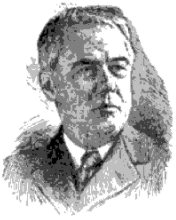
Thomas Thacher was an American lawyer.

Thomas Hill Hubbard was an American lawyer, judge and public official from Madison County, New York. A member of the Democratic-Republican party, Hubbard was twice elected as U.S. Representative from New York and was a three-time Presidential elector.
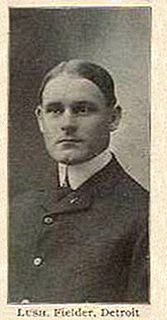
William Lucas Lush was an American baseball player and college athletics coach and administrator. He played seven seasons of Major League Baseball from 1895 to 1904, including three with the Washington Senators. He later worked as a college athletics coach at Yale University, Columbia University, Fordham University, the United States Naval Academy, St. John's University, the University of Baltimore and Trinity College, Hartford. He also held athletic director positions at Fordham and the Naval Academy. In the 1930s, he coached athletic teams at Sing Sing prison in Ossining, New York.
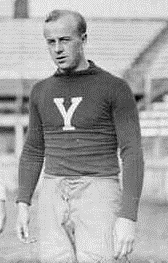
John Ebsworth Owsley was an American football player and coach and businessman. He played college football, principally as a left halfback, for Yale University from 1901 to 1904. He was the head coach of Yale's undefeated 1905 football team that outscored opponents 226 to 4. He also served as the head football coach at the United States Naval Academy in 1925. He gained a reputation as a wartime producer of armaments, working with Marlin-Rockwell Corporation during World War I and with the High Standard Manufacturing Company during World War II. He was one of the highest paid persons in the United States in 1941 and 1942.
The Metropolitan Steamship Company was for 75 years one of the chief transportation links between New York City and Boston, Massachusetts. It was closely associated with the Whitney family until its acquisition by Charles W. Morse in 1906. Even after being merged into Eastern Steamship Lines, it was maintained as a distinct service, the Metropolitan Line, until 1941.
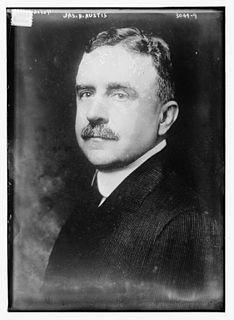
James Humphrey Hustis Sr. was an American railroad executive.

Asa Palmer French was an American attorney who served as the United States Attorney for the District of Massachusetts from 1906 to 1914.
Charles Richard Alsop was an American politician.
Henry G. Lapham was an American investment banker, oilman, philatelist, philanthropist, and sportsman. He was the founding president of the Boston Garden-Arena Corporation and a major sports promoter in Boston during the 1920s and 1930s.
















